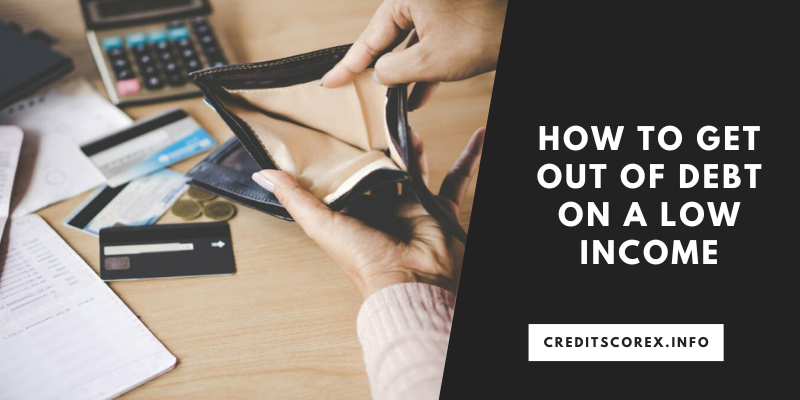
Debt can be a significant challenge, especially when you’re managing it on a low income. However, with careful planning, disciplined budgeting, and strategic decision-making, it’s possible to work towards financial freedom. In this article, we’ll explore practical strategies to help you get out of debt, even when dealing with a limited income.
1. Assess Your Financial Situation: Understand Your Debts
Before developing a plan to tackle your debts, take a comprehensive look at your financial situation. List all your debts, including credit cards, loans, and any outstanding bills. Note the outstanding balances, interest rates, and minimum monthly payments. Understanding the full scope of your debt is the first step towards effective debt management.
2. Create a Realistic Budget: Track Income and Expenses
Developing a realistic budget is essential, especially when managing debt on a low income. Take the following steps:
- Calculate Income: Determine your total monthly income, including wages, side hustles, and any government assistance.
- List Expenses: Record all your monthly expenses, including necessities like housing, utilities, groceries, transportation, and insurance.
- Identify Non-Essentials: Differentiate between essential and non-essential expenses. Cut back on discretionary spending to free up funds for debt repayment.
3. Prioritize Debt Payments: Tackle High-Interest Debts First
When dealing with multiple debts, prioritize them based on interest rates. Focus on paying off high-interest debts first, as they accumulate more interest over time. While making minimum payments on other debts, allocate any extra funds towards the high-interest debt to expedite its repayment.
4. Negotiate with Creditors: Explore Options for Relief
Reach out to your creditors to discuss your financial situation openly. Some creditors may be willing to negotiate lower interest rates, reduced monthly payments, or even settle for a lump-sum payment. Communicate proactively and inquire about hardship programs or debt consolidation options.
5. Explore Debt Consolidation: Streamline Payments
Debt consolidation involves combining multiple debts into a single, more manageable loan. This can simplify your debt repayment process and potentially lower your overall interest rate. Look for reputable consolidation options that align with your financial goals and provide relief from high-interest debts.
6. Build an Emergency Fund: Prevent Future Debt
While focusing on debt repayment, it’s crucial to build a small emergency fund. Having savings set aside can prevent you from relying on credit cards or loans when unexpected expenses arise. Even a modest emergency fund can act as a financial safety net and reduce the risk of accumulating additional debt.
7. Increase Income: Explore Additional Sources of Revenue
Consider exploring opportunities to increase your income, even if it’s through part-time work, freelancing, or a side hustle. The additional income can be directed towards debt repayment, accelerating your progress towards becoming debt-free.
8. Cut Unnecessary Expenses: Trim Your Budget
Review your budget and identify areas where you can cut unnecessary expenses. This might involve making temporary sacrifices, such as reducing dining out, entertainment expenses, or subscription services. Redirect the money saved towards debt repayment.
9. Snowball or Avalanche Method: Choose a Repayment Strategy
Two popular debt repayment strategies are the debt snowball and debt avalanche methods:
- Snowball Method: Start by paying off the smallest debt first, then use the freed-up funds to tackle the next smallest debt. This method provides psychological satisfaction as you see quick wins.
- Avalanche Method: Prioritize debts with the highest interest rates first. By focusing on high-interest debts, you minimize the overall interest paid over time.
Choose the method that aligns with your preferences and motivates you to stay committed to your debt repayment plan.
10. Seek Financial Counseling: Professional Guidance
If managing debt on a low income feels overwhelming, consider seeking assistance from a financial counselor. Nonprofit organizations and credit counseling agencies offer free or low-cost services to help you navigate your financial challenges. A professional can provide personalized advice and guidance tailored to your situation.
11. Stay Motivated: Celebrate Small Wins
Getting out of debt is a gradual process, and it’s essential to celebrate small victories along the way. Whether it’s paying off a credit card or reaching a milestone in your debt repayment plan, acknowledge your progress. Staying motivated will help you stay committed to your financial goals.
12. Avoid Accumulating New Debt: Break the Cycle
As you work towards paying off existing debts, it’s crucial to avoid accumulating new ones. Create a mindset shift towards mindful spending, and refrain from using credit cards or taking out loans unless absolutely necessary. Breaking the cycle of accumulating new debt is key to long-term financial stability.
Conclusion: A Journey to Financial Freedom
Getting out of debt on a low income requires discipline, strategic planning, and a commitment to financial goals. By assessing your financial situation, creating a realistic budget, and prioritizing debt payments, you can make steady progress towards becoming debt-free. Explore additional income sources, negotiate with creditors, and consider professional guidance if needed. Remember, every step towards financial freedom is a step in the right direction. Stay focused, stay disciplined, and celebrate your achievements along the way.
Leave a Reply